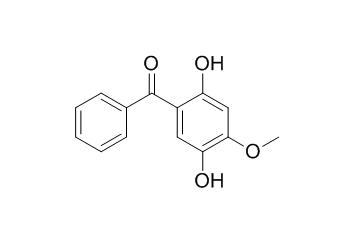Cearoin
Cearoin has anti-inflammatory, and antiallergic activities, it can markedly inhibit inflammatory responses including LPS-induced NO production by suppressing the expression of iNOS mRNA and LPS-induced mRNA expression of TNFα and CCL2. Cearoin induces autophagy, ERK activation and apoptosis in neuroblastoma SH-SY5Y cells, which is mediated primarily by ROS generation, suggesting its therapeutic application for the treatment of neuroblastomas.
Inquire / Order:
manager@chemfaces.com
Technical Inquiries:
service@chemfaces.com
Tel:
+86-27-84237783
Fax:
+86-27-84254680
Address:
1 Building, No. 83, CheCheng Rd., Wuhan Economic and Technological Development Zone, Wuhan, Hubei 430056, PRC
Providing storage is as stated on the product vial and the vial is kept tightly sealed, the product can be stored for up to
24 months(2-8C).
Wherever possible, you should prepare and use solutions on the same day. However, if you need to make up stock solutions in advance, we recommend that you store the solution as aliquots in tightly sealed vials at -20C. Generally, these will be useable for up to two weeks. Before use, and prior to opening the vial we recommend that you allow your product to equilibrate to room temperature for at least 1 hour.
Need more advice on solubility, usage and handling? Please email to: service@chemfaces.com
The packaging of the product may have turned upside down during transportation, resulting in the natural compounds adhering to the neck or cap of the vial. take the vial out of its packaging and gently shake to let the compounds fall to the bottom of the vial. for liquid products, centrifuge at 200-500 RPM to gather the liquid at the bottom of the vial. try to avoid loss or contamination during handling.
VNU Journal of Science2023, 39(2):24-33.
Inflammation2015, 38(1):445-55
J Ethnopharmacol.2018, 210:88-94
J Agric Food Chem.2021, 69(14):4210-4222.
Semyung University2017, 149407
ACS Food Sci. Technol.2023, 3(2):273-282.
Antimicrob Agents Chemother.2020, AAC.01921-20.
Korean Herb. Med. Inf. 2016, 4(1):35-42
Cytotechnology.2017, 69(5):765-773
Food Chem.2024, 456:140044.
Related and Featured Products
Planta Med. 1998 Mar;64(2):153-8.
Three new flavonoids and antiallergic, anti-inflammatory constituents from the heartwood of Dalbergia odorifera.[Pubmed:
9525107 ]
METHODS AND RESULTS:
Three new flavonoids, (3R)-4'-methoxy-2',3,7-trihydroxyisoflavanone (11), 7-methoxy-3,3',4',6-tetrahydroxyflavone (18), and 2',7-dihydroxy-4',5'-dimethoxyisoflavone (22), were isolated from the heartwood of Dalbergia odorifera T. Chen. (Leguminosae), together with twenty-two known compounds, (S)-4-methoxydalbergione (1), Cearoin (2), medicarpin (3), formononetin (4), sativanone (5), 3-hydroxy-9-methoxy-coumestan (6), meliotocarpan A (7), isoliquiritigenin (8), stevein (9), liquiritigenin (10), 3',4',7-trihydroxyflavanone (12), butein (13), 3'-hydroxymelanettin (14), koparin (15), bowdichione (16), fisetin (17), melanettin (19), sulfuretin (20), 3'-hydroxydaidzein (21), 3'-O-methylviolanone (23), xenognosin B (24), and dalbergin (25).
CONCLUSIONS:
These flavonoids were evaluated in antiallergic and anti-inflammatory tests. The results showed that (S)-4-methoxydalbergione (1) and Cearoin (2) exhibited antiallergic activity while (S)-4-methoxydalbergione (1), Cearoin (2), butein (13), koparin (15), bowdichione (16), 3'-O-methylviolanone (23), and xenognosin B (24) showed significant anti-inflammatory activity.
Molecules. 2017 Feb 6;22(2).
Cearoin Induces Autophagy, ERK Activation and Apoptosis via ROS Generation in SH-SY5Y Neuroblastoma Cells.[Pubmed:
28178193 ]
Neuroblastomas are the most common solid extracranial tumors in childhood. We investigated the anticancer effect of Cearoin isolated from Dalbergia odorifera in human neuroblastoma SH-SY5Y cells. SH-SY5Y cells were treated with various doses of Cearoin.
METHODS AND RESULTS:
The viability was measured by MTT assay. DCFDA fluorescence assay and Griess assay were used for the measurement of intracellular reactive oxygen species (ROS) and nitric oxide (NO), respectively. Western blot analysis was performed to clarify the molecular pathway involved. Cearoin induced cell death in a dose-dependent manner. Cearoin increased the phosporylation of ERK, the conversion of LC3B-I to LC3B-II, decrease in Bcl2 expression, the activation of caspase-3, and the cleavage of PARP, indicating the induction of autophagy and apoptosis. Furthermore, Cearoin treatment increased the production of ROS and NO. Co-treatment with the antioxidant N-acetylcysteine completely abolished Cearoin-mediated autophagy, ERK activation and apoptosis, suggesting the critical role of ROS in Cearoin-induced anticancer effects. Moreover, co-treatment with ERK inhibitor PD98059 partially reversed Cearoin-induced cell death, indicating the involvement of ERK in Cearoin anticancer effects.
CONCLUSIONS:
These data reveal that Cearoin induces autophagy, ERK activation and apoptosis in neuroblastoma SH-SY5Y cells, which is mediated primarily by ROS generation, suggesting its therapeutic application for the treatment of neuroblastomas.
Int Immunopharmacol. 2016 Nov;40:550-560.
Inhibitory effects of flavonoids extracted from Nepalese propolis on the LPS signaling pathway.[Pubmed:
27770720 ]
METHODS AND RESULTS:
Five types of flavonoids: isoliquiritigenin, chrysin, 3',4'-dihydroxy-4-methoxydalbergione, 4-methoxydalbergion, and Cearoin, markedly inhibited inflammatory responses including LPS-induced NO production by suppressing the expression of iNOS mRNA and LPS-induced mRNA expression of TNFα and CCL2. Their inhibitory effects on LPS-induced inflammatory responses correlated with the intensities of these flavonoids to suppress the LPS-induced activation of nuclear factor κB (NF-κB), an essential transcription factor for the mRNA expression of iNOS, TNFα, and CCL2. Among these flavonoids, 3',4'-dihydroxy-4-methoxydalbergione and 4-methoxydalbergion markedly inhibited the LPS-induced activation of IKK, thereby abrogating the degradation of IκBα and nuclear localization of NF-κB. On the other hand, isoliquiritigenin, chrysin, and Cearoin failed to inhibit these signaling steps, but suppressed the transcriptional activity of NF-κB, which caused their anti-inflammatory effects.
CONCLUSIONS:
The results of the present study revealed that these five kinds of flavonoids are the components of Nepalese propolis that exhibit anti-inflammatory activities with a different regulatory mechanism for the activation of NF-κB.



